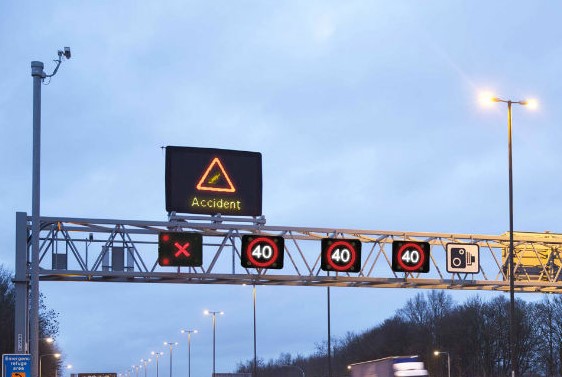Pipe puzzle during M4 upgrade
Tuesday 30th July 2019 15:00

Work to turn the M4 into the longest ‘smart motorway’ in England has posed a major engineering challenge for Thames Water, with nearly 100 water mains and sewers crossing the 32-mile stretch due to be upgraded.
There are 89 points where pipework - serving more than 200,000 customers in places such as Reading, Slough, Windsor and Maidenhead with essential water and waste services - crosses the motorway.
Many pipes cross bridges which need to be rebuilt between junctions 3 (Hayes) and 12 (Theale). Others require diverting to make way for new sign gantries and sound barriers, while more need to be moved when the tunnels they run through are replaced by smaller ducts.
Thames Water is now in discussions with Highways England, which is carrying out the motorway upgrade, to decide how much of the infrastructure will need to be changed – without interrupting services to customers.
Abdul Qadeer, Thames Water engineer, said: “This is set to be one of the biggest projects of its kind the company has ever taken on. It’s a huge challenge and vital we don’t disrupt water supplies or wastewater services to residents and businesses, whose properties are served by these mains and sewers, while we carry out the work.
“We’re working closely with Highways England to solve this complex puzzle and reviewing all the proposals, and as a result have already reduced the number of pipes that need to be diverted. That’s good news for customers, and will reduce the time and expense involved.”
Aside from HS2 and Crossrail, Thames Water said it will involve the most pipes it needs to move or protect as part of an infrastructure project. In total, there are 37 points where water mains cross the M4, plus 52 crossing places for sewers along the 32 miles of road being upgraded.
Thames Water’s activities are expected to start around the end of the year and will continue as work progresses.
The smart motorway project aims to improve capacity and relieve congestion, and is due to be completed in 2022. It includes converting the hard shoulder into a semi-permanent lane, and erecting new gantries and electronic signs to give information about conditions and speed limits.
A Highways England spokesman said: “The upgrade to the M4 is progressing well. We started between junctions 8/9 and 12 in July 2018 and we are about to move east and start the most complex section of the work, which includes the replacement of 11 bridges.
“We are doing all of this while keeping the motorway open during the day Monday to Friday throughout the project.
“Smart motorways are statistically as safe as traditional motorways and add vital capacity to our motorway network. They are central to our plans for modernising the motorway network, adding 120 miles of new lanes to motorways in the south east by 2020.
“Drivers will also see better information about conditions through new smart motorway technology which helps us to manage incidents, smooth traffic flow, make journeys more reliable and improve journey times, while maintaining high levels of safety.”
